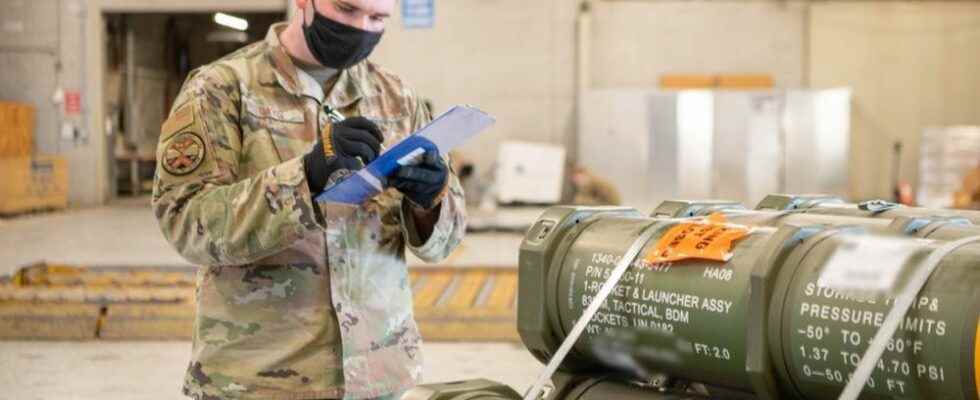With painstaking care, since the Russian invasion of February 24, researchers at the German think tank Kiel Institute evaluate the military aid provided to Ukraine. The ranking they draw is far from being to the advantage of France. The latter may have one of the most powerful armies in Western Europe – the largest workforce and second largest budget behind the British army – but in October it only ranked 13th financially (216 million dollars). euros). Far behind the top three, made up of the United States (27.6 billion), the United Kingdom (3.7 billion) and Poland (1.8 billion, mainly for equipment of Soviet origin).
Why such a difference ? In recent years, France has tended to get rid of out-of-service equipment very quickly, in order to no longer have to finance their maintenance, whereas other States have kept this equipment longer. This is revealed by a new study by the French Institute of International Relations (Ifri), “Stocks, high-intensity life insurance”. As a result, Paris’ leeway to supply arms to kyiv is weaker than others.
The case of the Gepard anti-aircraft armored vehicles delivered by Germany illustrates this difference. These had been vegetating for almost a decade before being reconditioned and delivered to kyiv. Ifri believes that France could have done the same with its AMX-10P, infantry vehicles equipped with a cannon, definitively withdrawn from service only seven years ago. But these “seem to have completely disappeared from the inventories”, “including a hundred modernized copies” between 2006 and 2008 and which could “have been transferred to Ukraine”.
The stocks “generally disappeared between 2007 and 2016”, notes the think tank, dismantled or resold. The end of the Cold War, the abolition of compulsory military service and successive budgetary reforms led the French armed forces to carry out slimming cures, starting in the 1990s. But it was above all after the financial crisis of 2008 that the ministry had to cut corners at all costs, even closing its reserves. “Constrained to a difficult arbitration, the armies have logically favored the preservation of existing capacities to the detriment of prudential storage policies, even moderately costly in human and financial resources.”
Armies “on the bone”
As a result, the armies are today “on the bone”. “We took on our employment stocks and not on reserves to quickly respond to Ukrainian needs”, recently acknowledged General Thierry Burkhard, Chief of Staff of the French Armed Forces. They only have 58 Caesar guns out of the 76 they had. For ammunition, it’s worse. A parliamentary report recently revealed that “the current contracts make it possible to finance 6000 blows per year, even 9000 blows at the most”, that is to say barely 25 per day…
A U.S. Airforce member oversees pallets of ammunition, weapons and miscellaneous equipment bound for Ukraine, at Dover Air Force Base in Delaware, January 21, 2022.
afp.com/Handout
Experts estimate that France would be short of shells, rockets and missiles after two weeks of a conflict of the intensity of that in Ukraine, where artillery plays a major role. Aware of the problem, the Minister of the Armed Forces, Sébastien Lecornu, announced that 2 billion euros would be devoted to ammunition in 2023 (a third more than in 2022). And the need for quantity – of “mass” – not only affecting equipment, it has also set itself the objective of reaching 100,000 reservists in the armies, against 41,000 currently.
To better cope with high intensity combat, several solutions exist. “We can already improve the maintenance of equipment in service to increase their availability rate (barely 35% of Tiger helicopters in 2021 and 61% of VBCI vehicles), argues Léo Péria-Peigné, author of the study. also increase the stocks of ammunition and equipment of all the forces to cope with the destruction caused by a war or an unforeseen development.Like insurance, keeping stocks may seem useless in peacetime, but they prove indispensable in times of conflict, whether for our own use, or to support an ally in difficulty.”
For this, more resources will be needed and the continuation of the budgetary effort initiated in 2017 by Emmanuel Macron for defence. The 2024-2030 military programming law is currently in preparation. The general staff is claiming 430 billion euros, while the budget services are considering 370 billion instead. If Bercy wins, the question of stocks, however strategic, could remain a few years without a satisfactory answer.
